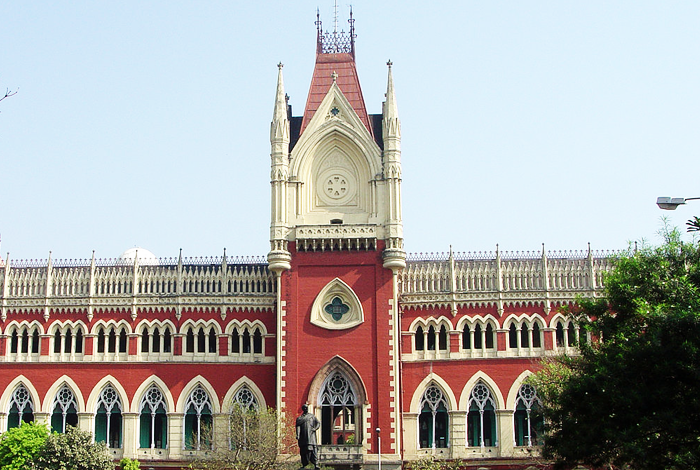History
North 24 Parganas district is a district in southern West Bengal, India. North 24 Parganas extends in the [tropical zone] from latitude 22º11´6´´ north to 23º15´2´´ north and from longitude 88º20´ east to 89º5´ east. It is bordered to Nadia by north, to Bangladesh (Khulna Division) by north and east, to South 24 Parganas and Kolkata by south and to Kolkata, Howrah and Hoogly by west. Barasat is the district headquarters of North 24 Parganas.
North 24 Parganas is West Bengal’s most populous district. It is also the tenth largest district in the State by area and second most densely populated district (3,781/km² as of 2007 census).
Ancient History
According to Ptolemy’s Treaties on geography, written in the 2nd Century A.D., the ancient land of Gangaridi was stretched between the rivers Bhagirathi-Hoogly (lower Ganges) and Padma-Meghna. The modern-day 24 Parganas was the southern and the south-eastern territory of that legendary kingdom.
Archeological excavation at Berachampa village in Deganga PS proves that though the area was not directly attached to the rule of the Guptas, yet it could not shun their cultural influence. Xuanzang (c. 629-685) visited 30 Buddhist Biharas and 100 Hindu Temples in India and some of these were in the Greater 24 Parganas region.
The district was not a part of Shashanka’s unified Bengali empire known as Gauda, but it is assumed that the district which was the south-west frontier territory of ancient Bengal, was comprised in under the rule of Dharmapala (estimated c. 770-810). The Pala rule was not quite strong in this part as no excavation uncover any of Buddhist Pala antiquities but a lots of Hindu Sena sculptures.
Middle Ages
In the middle of 16th century, Portuguese pirates began to invade and plunder many of the waterways and prosperous human settlements in the lower delta region. People started to run off these places in fear of being murdered, raped or captured to be sold as slaves. The Basirhat sub-division of North 24 Parganas suffered these torments.
Maharaja Pratapaditya, a Bhuian king (one of the 12 feudal lords of Bengal who declared their sovereignty from the Mughal Empire) of Jessore, Khulna, Barisal and Greater 24 Parganas, fought and resisted the Portuguese in the early years of 17th Century. When he was defeated by the Mughals, Lakshmikanta Majumdar of Barisha, a sub-ordinate of the king, won the favor of fortune. While establishing the famous Kali Temple at Kalighat, Majumdar got some help of Raja Basanta Roy Pratapaditya’s uncle who was later killed by his ever-suspicious nephew. Yet Majumdar played for Abdul Rahman Khan, the Mughal Subbadar (governor of Mughal provinces). Pratapaditya lost the battles of Salka and Magrahat and was captured by the Mughal. Later he died in prison on the way to Delhi. Majumdar was reworded the zamindari of Magura, Paikan, Anwarpur and Kalikata for his treason against his own sovereign from Jahangir in 1611. Later his grandson was bestowed the Zamindari of Khulna and Greater 24 Parganas (partially) by Murshid Quli Khan, the Nawab of Bengal. Once the capital of Raja Bikramaditya and Maharaja Pratapaditya was at Dhumghat. Later it was transferred to Ishwaripur (Originated from the name Jeshoreshwaripur). Maharaja Pratapaditya declared independence of South Bengal (Jessore, Khulna in north, Sundarbans, Bay of Bengal in South, Barisal in east and River Ganges in west) against the Mughal Empire of India.
Jashoreshwari Kali Temple (built by Pratapaditya), Chanda Bhairab Mandir at Ishwaripur (a triangular temple, built during the Sena period), Five domed Tenga Mosque at Banshipur (Mughal period), two big and four small domed Hammankhana (constructed by Pratapaditya) at Bangshipur, Govinda Dev Temple at Gopalpur (built by Basanta Roy, uncle of Maharaja Pratapaditya in 1593), Jahajghata Port (Khanpur). Pratapaditya king of Jessore and one of the bara-bhuiyans of Bengal. Pratapaditya fought against the Mughal imperial army during its inroad into Bengal in the early 17th century. His father Shrihari (Shridhar), a Kayastha, was an influential officer in the service of daud khan karrani. On the fall of Daud he fled away with the government treasure in his custody. He then set up a kingdom for himself in the marshy land to the extreme south of Khulna district (1574) and took the title of Maharaja. Pratapaditya succeeded to the kingship in 1574. The baharistan and the travel diary of Abdul Latif and the contemporary European writers, all testify to the personal ability of Pratapaditya, his political pre-eminence, material resources and martial strength, particularly in war-boats. His territories covered the greater part of what is now included in the greater Jessore, Khulna and Barisal districts. He established his capital at Dhumghat, a strategic position at the confluence of the Jamuna and Ichhamati.
Among the Bengal zamindars Pratapaditya was the first to send his envoy to Islam Khan Chisti with a large gift to win the favour of the Mughals, and then tendered personal submission to the Subahdar (1609). He promised military assistance and personal service in the Mughal campaign against musa khan, a pledge that he did not keep. To punish Pratapaditya for his disloyalty as a vassal and to subjugate his territory, a large expedition was launched under the command of Ghiyas Khan, which soon reached a place named Salka, near the confluence of the Jamuna and Ichhamati (1611). Pratapaditya equipped a strong army and a fleet and placed them under expert officers including Feringis, Afghans and Pathans. His eldest son Udayaditya made a big fort at Salka with natural barriers on three sides rendering it almost impregnable. In battle the Jessore fleet gained an initial advantage. But the imperial army cut off the Jessore fleet, made a breach in its ranks and broke its unity and discipline. In the melee that followed, the admiral Khwaja Kamal was killed. Udayaditya lost heart and hastily fled to his father, narrowly escaping capture. Jamal Khan evacuated the fort and followed Udayaditya.
Pratapaditya prepared himself to fight a second time from a new base near the confluence of Kagarghat canal and the Jamuna. He made a big fort at a strategic point and gathered all his available forces there. The imperialists began the battle by an attack on the Jessore fleet (Jan 1612) and compelled it to seek shelter beneath the fort. But their further advance was checked by the heavy cannonade of the Jessore artillery. A sudden attack of the imperialists completely defeated the Jessore fleet and they fell upon the fort with the elephants in front, thereby compelling Pratapaditya to evacuate the fort and retreat.
The second defeat sealed the fate of Pratapaditya. At Kagarghat he tendered submission to Ghiyas Khan, who personally escorted Pratapaditya to Islam Khan at Dhaka. The Jessore king was put in chains and his kingdom was annexed. Pratapaditya was kept confined at Dhaka. No authentic information is available regarding his last days. Probably he died at Benares on his way to Delhi, as a prisoner.
British Raj
The territory of Greater 24 Parganas were under the Satgaon (ancient Saptagram, now in Hoogly district) administration during the Mughal era and later it was included in Hoogly chakla (district under post-Mughal Nawabi rule) during the rule of Murshid Quli Khan. In 1757, after the Battle of Plassey, Nawab Mir Jafar confer the Zamindari of 24 parganas and janglimahals (small administrative units) to the British East India Company. These were Amirpur, Akbarpur, Balia, Birati, Azimabad, Basandhari, Baridhati, Bagjola, Kalikata, Garh, Hatiagarh, Islampur, Dakshin Sagar, Kharijuri, Khaspur, Ikhtiarpur, Madhyamgram, Magura, Medanmalla, Maida, Manpur, Muragachha, Pechakuli, Paikan, Rajarhat, Shahpur, Shahnagar, Satal and Uttar Pargana. Since then, this entire territory is known as Twentyfour Parganas.
In 1751, the Company assigned John Zephaniah Holwell as zemindar of the District.[3] In 1759, after the Bengali War of 1756-57, the Company assigned it to Lord Clive as a personal Jaghir (zamindari) and after his death it again came under the direct authority of the Company.
In 1793, during the rule of Lord Cornwallis, entire Sunderbans were in Twentyfour Parganas. In 1802, some parganas on the western banks of river Hoogly were included into it. These parganas were in Nadia earlier. In 1814, a separate collectorate was established in Twenty-four Parganas. In 1817, Falta and Baranagar and in 1820, some potions of Nadia’s Balanda and Anwarpur were encompassed to it. In 1824, portions of Barasat, Khulna and Bakhargunge (now in Bangladesh) were also included to it. In 1824, the district Headquarter was shifted from Kolkata to Baruipur, but in 1828, it was removed to Alipore. In 1834, the district was spilt into two districts – Alipore and Barasat, but later these were united again.
In 1905, some portion of this district around the Sunderbans was detached and linked to Khulna and Barishal. These parts remained in Pakistan (later Bangladesh territories where Jessore’s Bangaon was joined to Twentyfour Pargana after the 1947 partition.
After Independence
In 1983, an administrative reform committee under the chairmanship of Dr. Ashok Mitra suggested to spilt the district into two and as per the recommendation of the committee two districts – North and South 24 Parganas were created. The North 24 Parganas which was included to the Presidency Division has been formed with 5 sub-divisions of the Greater 24 Parganas namely Barasat (Headquarter), Barrackpore, Basirhat, Bangaon and Bidhannagar (a satellite township of Kolkata, popularly known as Salt Lake).


